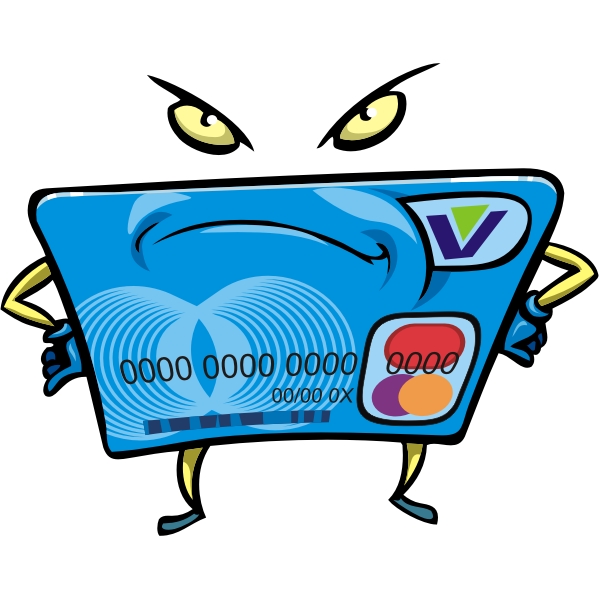Credit cards are a necessary evil.
Yes, that’s right. I’m calling credit cards evil.
It’s trendy in this day and age to be angry at banks, Wall Street, and people that make money, but in this case, the anger is well-placed. Credit card companies are doing everything possible to take as much money as possible out of your business as they can, and they do a great job of it. With so many people paying with credit cards, not accepting them is not an option. So how can you help your dealership maximize profit and minimize card processing fees?
Simple. You need a guy on the inside who can point you in the right direction. As a former Five-Star Dodge Dealership service advisor, mechanic, and business-to-business dealership CRM sales rep turned credit-card processing salesman, I’m here to help. What follows are some insider tips on dealing with your credit card processing account.
Understanding the Vocabulary is Key
Credit card companies want you to stay confused, pay your bill, and not ask questions. As a result, statements are vastly different between processers and terminology is varied. Here are a few basic terms that you will need to understand before you can really understand the hustle.
- Per-item fees: Charges that the processing company assigns to every transaction swiped. Usually a dollar amount, ex. $0.10 per item. Basis Points: The percentage amount the processing company charges as a fee. There are one hundred basis points in one percent. 10 basis points = 0.010 percent.
- Downgrade: A card transaction that is higher risk, qualifying for a surcharge.
- Surcharge: The extra amount credit card processers charge for higher-risk transactions, such as card not present, key entered, address verification not matching, etc.
- Assessments: A flat fee paid to Visa, Mastercard, Discover, and American Express as a percent of each transaction.
- Interchange: A percentage of each transaction paid to the card issuing bank (MBNA, PNC, Bank of America, Citibank, etc.)
- Discount Rate: It’s not a discount at all – this is the amount of money per transaction that you are paying to the credit card processing company
Nobody Gets the Qualified Rate
The qualified rate is the rate that you pay on the lowest-risk card transactions — card present, card swiped. Many companies will offer you a low “qualified” rate, because most merchants think that the qualified rate is the rate they will pay on all transactions.
“Well, if I swipe all my transactions, I qualify, right?” WRONG. 90% of credit card transactions downgrade automatically. So, no matter how low, you’re almost never getting that “qualified” rate.
Why? Here are just a few reasons:
- Rewards cards automatically downgrade (95% of cards are rewards cards)
- Transactions aren’t settled daily (cashier forgets to batch out)
- Corporate cards downgrade to the highest possible surcharge rate.
Don’t fall prey to the sales pitch of “flat” rate, either. There’s no such thing. The credit card companies control downgrades, the processing companies do not. Visa and Mastercard have lists, updated regularly, that show the various types of downgrades and the surcharges that they require. The only thing the credit card processing company can control is their own surcharges on downgraded transactions – which brings us to the only way to eliminate surcharges altogether.
Interchange and Assessments Pricing – The Holdback of the Credit Card World
The best possible rate you can get from a credit card processing company is the one they are least likely to offer you – Interchange and Assessments pricing. I&A pricing (also known as Pass-Through pricing) means that you are charged the actual percentage rate paid to the issuing banks and the credit card companies, plus a small percentage and per item fee to the processer. In I&A pricing, your rate is usually expressed as a number of Basis points plus a number of cents (the per item fee). With I&A Pricing, the processing company is giving up the opportunity to make money on you with surcharges for downgraded transactions. It’s the best possible price you can get. Here’s how it works.
Conventional pricing: Your friend asks you to buy them a candy bar on your way back from lunch. You know that the candy bar costs $1.00, plus 6% tax. You ask your co-worker for two dollars. This covers the candy bar, the sales tax, and 94 cents, which is your “spread,” or the profit you make. This is great if you are doing this once or twice a month, and your friend doesn’t notice or care.
Interchange and Assessments: Your friend asks you to pick him up a candy bar on your way back from lunch – every day. If you charge him $2 every time, he’ll realize how much extra he’s paying and do it himself. You know that the candy bar costs $1.00, plus 6% tax, so you ask him for $1.11 – covering the cost of the candy bar, the tax, and a small spread of five cents. You’ll only make $1.00 doing that every business day for a month. But it’s better than making nothing at all.
Interchange and Assessments pricing is usually reserved for VIP customers or very high-volume accounts. Most car dealerships fall under the “high-volume account” range. Despite that fact, most credit card processers will only give I&A pricing as a last resort. You’re going to have to ask for it.
This is Just the Beginning
What I’ve given you here is just a sharpened stick to help you through the wilderness of credit card processing. Just like the automotive industry, the credit card industry is huge and multi-layered, with its own intricacies, tricks, and traps. If you have more questions, feel free to email me, and I’ll try to help you through them. As automotive professionals (or in my case, former automotive professionals) we have to look out for each other, right?







